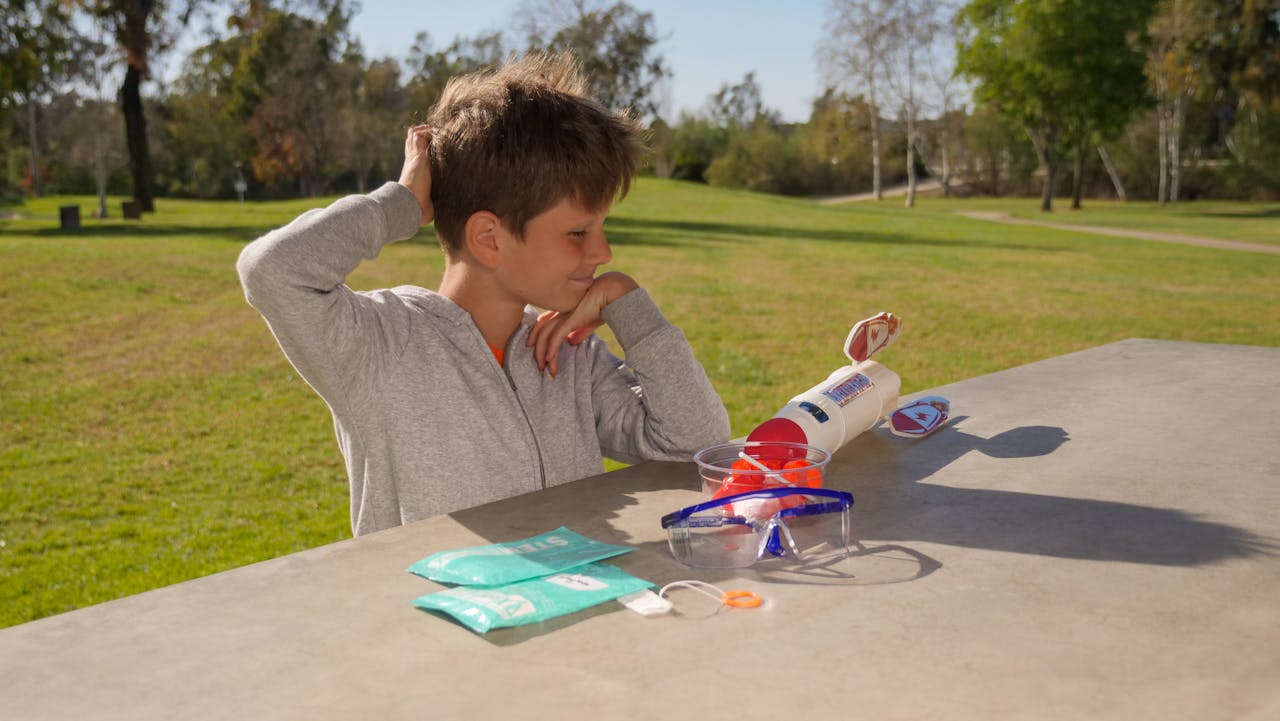Social and Digital Media
Personal Branding for Fitness Trainers That Attracts Clients
The fitness and wellness industry has never been more crowded—or more competitive. As a trainer or coach, your technical knowledge and certifications are table stakes, not differentiators. What separates those who struggle to fill their calendars from those who turn away clients is a personal brand that communicates expertise, builds trust, and resonates with the right audience. Your brand isn’t just a logo or a catchy tagline; it’s the sum total of every interaction, every piece of content, and every promise you make and keep. Building that brand requires strategic thinking, consistent execution, and a willingness to put yourself out there in ways that feel authentic yet professional.
Most trainers make the mistake of jumping straight into social media posting or website design without first establishing who they are and what they stand for. Your brand identity is the foundation that every other marketing activity rests on. Start by articulating your core values—what do you believe about fitness, health, and the client relationship? Are you all about evidence-based training, or do you take a more holistic, mind-body approach? Do you specialize in helping busy professionals squeeze workouts into packed schedules, or do you focus on post-rehabilitation strength building?
The fitness and wellness industry has never been more crowded—or more...
The Role of PR in Combatting Gambling Stereotypes
Public perception of the gambling industry remains one of its greatest challenges, with deeply ingrained stereotypes often overshadowing legitimate business contributions and responsible practices. PR professionals working within this sector face the unique task of reshaping narratives that have persisted for decades, balancing commercial objectives with genuine social responsibility. The most successful campaigns don’t simply defend the industry—they proactively demonstrate value through economic data, authentic community stories, and transparent communication about responsible gaming initiatives. By applying strategic PR frameworks that prioritize education over promotion, gambling organizations can gradually shift public sentiment and build lasting trust with stakeholders.
The economic contributions of gambling operations extend far beyond gaming floors, yet these benefits rarely receive proportional attention in public discourse. Effective PR strategies position casinos and gaming companies as multifaceted entertainment destinations that generate substantial economic value for their communities. Rather than leading with gaming revenue figures, successful campaigns articulate a broader purpose that connects with diverse audiences through stories about job creation, tourism development, and tax revenue that funds public services.
Public perception of the gambling industry remains one of its greatest...
Emerging Trends in PR for Toys and Games
The toy industry stands at a crossroads where traditional play meets digital innovation, and where consumer values shape product development as much as creativity does. PR professionals working in this space face unique challenges: how do you capture media attention in an oversaturated market while authentically connecting with parents who demand transparency, sustainability, and meaningful play experiences? The answer lies in understanding three fundamental shifts reshaping toy marketing—the non-negotiable expectation of environmental responsibility, the integration of augmented reality as a storytelling tool rather than a gimmick, and the need to speak the language of Gen Z parents who make purchasing decisions based on social proof and values alignment. These aren’t fleeting trends but permanent changes in how toy brands must communicate their value to consumers and media alike.
Sustainability has transitioned from a competitive advantage to a baseline requirement in toy PR. According to research from Global Toy News, sustainability moved from “bonus” to “baseline” in 2025, meaning journalists now expect brands to have concrete sustainability practices before they’ll even consider coverage. This shift requires PR professionals to fundamentally rethink how they position eco-friendly initiatives—not as special campaigns or limited-edition lines, but as core operational values that permeate every aspect of the business.
The toy industry stands at a crossroads where traditional play meets digital...
Defamation and Libel Laws Explained for Content Creators
Publishing content in today’s digital world means walking a careful line between free expression and legal liability. Whether you’re a blogger, social media manager, journalist, or small business owner, understanding defamation law isn’t just academic—it’s practical protection against costly lawsuits and reputation damage. The legal landscape around false statements has grown more complex as technology blurs traditional boundaries between written and spoken communication. This guide breaks down what you need to know about defamation, libel, and slander so you can publish with confidence while protecting yourself from legal exposure.
Defamation serves as the umbrella term covering any false statement that damages someone’s character and is communicated to a third party. This third-party communication requirement is critical—if you call someone a thief directly to their face with no one else present, that’s not defamation because it doesn’t damage their reputation in anyone else’s eyes. The harm comes from what others think, not what the target person knows you said.
Publishing content in today's digital world means walking a careful line...
Leveraging Social Media To Engage Health-Conscious Consumers
Health-conscious consumers represent one of the fastest-growing audience segments on social media, and reaching them requires more than traditional advertising approaches. These individuals actively seek authentic information, community support, and trustworthy guidance to make informed decisions about their wellness journeys. For healthcare marketers, wellness brand managers, and healthcare providers, social media offers an unprecedented opportunity to build meaningful connections with this engaged audience through wellness challenges, educational content, and strategic influencer partnerships. Understanding how to effectively use these tactics while maintaining compliance and authenticity can transform your social media presence from a simple broadcast channel into a thriving community that drives real behavior change and lasting brand loyalty.
Wellness challenges have become a cornerstone of social media engagement for health-conscious audiences, offering a structured way to motivate participation and build community around shared health goals. The key to successful wellness challenges lies in creating experiences that are both achievable and shareable, tapping into the social nature of platforms like Instagram and TikTok.
Health-conscious consumers represent one of the fastest-growing audience...
A Guide to Managing PR for Controversial Game Themes
Video game content that pushes boundaries can spark intense public debate, putting PR teams in the hot seat. When a game tackles sensitive subjects—whether violence, political themes, or social issues—the response from players, media, and advocacy groups can range from passionate support to fierce criticism. PR professionals, community managers, and developers need a clear roadmap for managing these situations without compromising their creative vision or damaging their studio’s reputation. This guide provides actionable strategies for responding to public concerns, articulating artistic intent, and building community support when your game becomes the center of controversy.
Video games have matured as a medium, tackling complex themes that once belonged exclusively to film and literature. This artistic growth brings PR challenges that require specialized knowledge and careful planning. The gaming community operates across multiple platforms—from Reddit and Discord to Twitter and YouTube—where opinions spread rapidly and criticism can snowball within hours.
Video game content that pushes boundaries can spark intense public debate,...
Thought Leadership 101: Getting Started
Building influence in health technology requires more than just technical expertise or clinical knowledge. Industry leaders who shape conversations and drive innovation combine deep subject matter knowledge with strategic communication and relationship building. Recent data shows that 88% of business decision-makers believe thought leadership content improves their perception of organizations, while 47% say it directly led them to do business with a company. The healthcare technology sector particularly values authentic voices who can translate complex innovations into meaningful insights that advance patient care and system efficiency.
The health technology landscape continues to evolve rapidly with artificial intelligence, remote care solutions, and digital therapeutics reshaping traditional approaches. True thought leaders in this space don’t just track these changes – they actively shape the dialogue around how emerging technologies can solve healthcare’s biggest challenges. Research from Edelman shows that 65% of buyers say the pandemic has increased their consumption of thought leadership content, making it more important than ever to establish authoritative voices.
Building influence in health technology requires more than just technical...
Social Media Crisis Management For Cybersecurity Incidents
Social media plays a vital role in managing cybersecurity incidents and maintaining stakeholder trust during digital crises. When security breaches occur, organizations must respond quickly and effectively across social platforms to protect their reputation and keep stakeholders informed. According to recent studies, companies that respond to data breaches within the first 24 hours maintain significantly more public trust than those that delay their communications. This article provides a detailed guide for cybersecurity professionals and communications teams on creating real-time updates, managing public reactions, and monitoring sentiment during cybersecurity incidents on social media platforms.
A strong crisis response starts with the right team structure. Your crisis response team should include representatives from social media, public relations, legal, human resources, and executive leadership. Each team member needs clearly defined roles and responsibilities to ensure rapid, coordinated responses when incidents occur.
Social media plays a vital role in managing cybersecurity incidents and...









